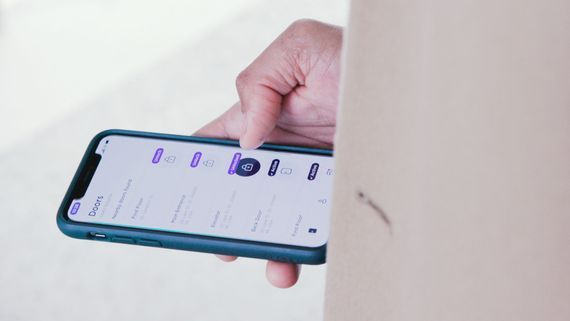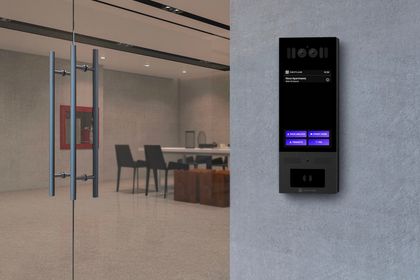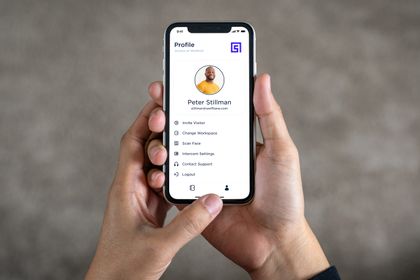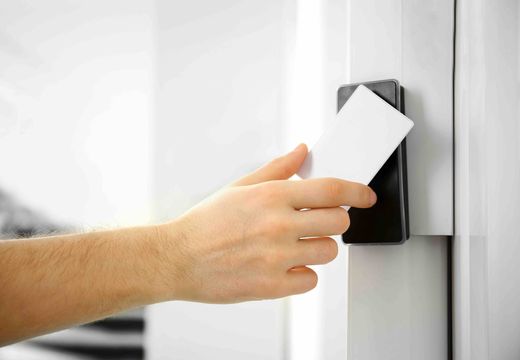In today’s world, security is a top priority for businesses, organizations, and homeowners. With technological advancements, access control systems have evolved to provide a higher level of security and convenience. One such technology is the RFID access control system. In this blog post, we will explore what RFID access control is, how it works, its advantages and disadvantages, and the benefits of using mobile access control system compared to systems like RFID card access.
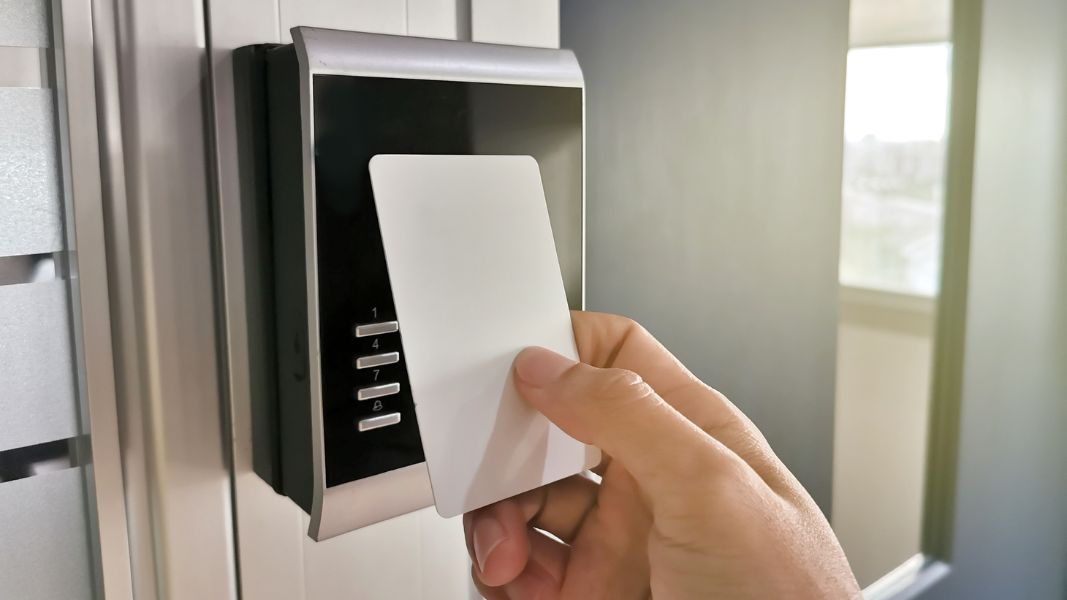
Table of contents
- What is RFID Access Control?
- How RFID Access Control Works
- Choosing the Right RFID Access Control System: Key Factors to Consider
- Advantages of RFID Access Control
- Disadvantages of RFID Access Control
- RFID Access Control vs NFC: Understanding the Key Differences
- RFID and Mobile Access Control: The Battle for Gated Entry Security
- Maximize Your Safety: Why Upgrading Your RFID Entry System Matters
- Benefits of Mobile Access Control
- How New Technologies and Requirements for Higher Safety Give Advantage to Newer Solutions
- Future Proof Your Investment
- Navigating the Access Control Landscape: What Solutions Do Customers Prefer?
- Top Mobile Access Control Readers & Systems
Suggested Posts:
- Mobile Access Control With Remote Unlock
- Best Cloud Based RFID Access Control Systems
- Gated Entry Systems – Tips to Reduce Costs, Improve Safety and Convenience
- Complete Guide to Key Card Entry System
What is RFID Access Control?
Radio Frequency Identification (RFID) is a technology that uses radio waves to transfer data between a reader and a tag embedded in an object, such as an access card or key fob. RFID technology is widely used for various applications, including inventory management, payment processing, and access control. An RFID access control system provides a secure, reliable, and contactless way of managing entry to buildings and restricted areas.
How RFID Access Control Works
An RFID access control system consists of four main components:
- RFID tags: These are typically embedded in key cards or key fobs and contain unique identifying information.
- Antennas: They receive signals from the RFID tags and transmit them to the RFID reader.
- RFID reader: This device reads the information stored on the RFID tags and sends it to the access control system for authorization.
- Transceiver: It enables communication between the RFID reader and the access control system.
When a user approaches an RFID-enabled door with their credential (an RFID card or key fob), the reader sends a signal to the tag, which then transmits its unique identifying information to the reader. The reader sends this information to the door lock access control system, which either grants or denies access based on the authorization data stored in the system. The entire process is contactless and occurs within a fraction of a second.
Choosing the Right RFID Access Control System: Key Factors to Consider
When selecting an RFID access control system, it’s important to consider several factors to ensure it meets your security needs. Look for a system with a user-friendly interface, making it easy for administrators to manage access rights and monitor usage.
The system should also offer a high level of encryption, ensuring data protection and reducing the risk of hacking. It’s also crucial to check compatibility with existing infrastructure, as well as the availability of technical support and system updates. Lastly, consider the scalability of the system, ensuring it can grow and adapt to your organization’s evolving security requirements.
Advantages of RFID Access Control
There are several advantages to using RFID access control solutions:
- Security: RFID access control solution provide a high level of security as specialized equipment is required to read the data stored on the tags. This makes it difficult for unauthorized individuals to gain access.
- Convenience: The contactless nature of RFID access control systems enables users to quickly and easily unlock doors by simply bringing their credential close to the RFID reader.
- Size: RFID cards are typically the same size as a standard bank card, making them easy to store and carry.
- Diversity: RFID locks come in various sizes and configurations, allowing them to be easily integrated into different types of doors and furniture.
- Master Card Functionality: A single RFID key card can be used to program multiple locks, enabling users to have a single card for multiple access points.
Disadvantages of RFID Access Control
Despite its advantages, there are some disadvantages associated with RFID access control systems:
- Lost Keycards: Losing an RFID keycard can be a significant inconvenience, as users must obtain a replacement card to regain access to secured areas.
- Hacker Alert: RFID systems can be hacked by tech-savvy individuals, posing a potential security risk.
- Power Shortage Issue: Electric RFID keycards may malfunction during power outages, causing access issues or leaving doors unlocked.
- Expensive to Set Up: RFID access control system can be complex and costly to install, as they require wiring and integration with a secure computer system.
- Not Totally Hassle-Free: Users may need to manually adjust their computer clock twice a year for time-based access restrictions if the server computer is not connected to the internet or if there is a time-based access restriction.
RFID Access Control vs NFC: Understanding the Key Differences
NFC and RFID technologies play a crucial role in modern building security, offering contactless and efficient access control solutions. RFID systems use passive tags or cards to grant access to authorized personnel, streamlining entry points and improving security. This technology is prevalent in various industries and applications, providing an effective and low-cost security solution.
On the other hand, NFC enables two-way communication between devices, such as smartphones and access control readers, offering a higher level of security and convenience. With NFC-based systems, users can leverage their mobile phones for secure entry, eliminating the need for physical cards and reducing the risk of unauthorized access. By integrating these technologies into building security systems, facility managers can enhance overall safety, user experience, and access management.
RFID and Mobile Access Control: The Battle for Gated Entry Security
In the world of gated entry systems, RFID and modern access control system often go head-to-head. While RFID technology provides a reliable, contactless solution for secure access, advanced access control systems offer greater versatility and functionality.
Contemporary access control systems often incorporate mobile credentials, biometrics, and other advanced security features, ensuring better overall security and user convenience. As a result, property managers and security professionals must carefully weigh all the data and the pros and cons of each approach to determine the most suitable option for their specific needs and requirements.
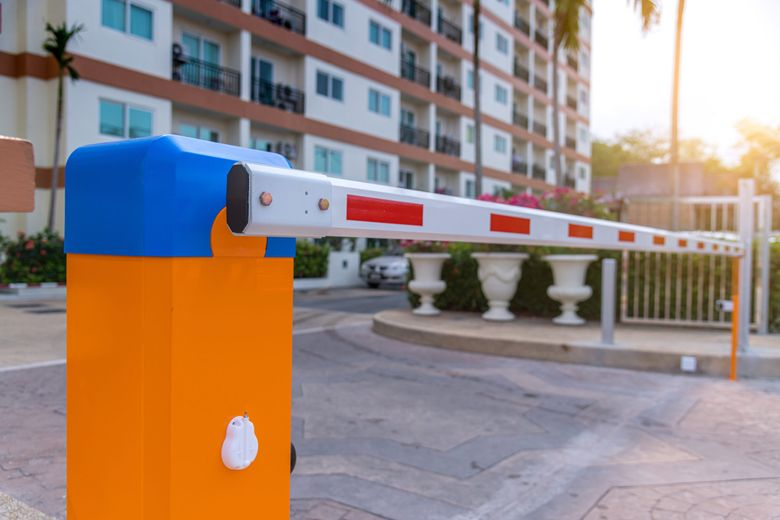
Maximize Your Safety: Why Upgrading Your RFID Entry System Matters
With advancements in technology, mobile access control has emerged as a promising alternative to traditional RFID access or entry systems. Mobile access control systems leverage smartphones and modern communication technologies such as Near Field Communication (NFC) and Bluetooth Low Energy (BLE) to provide a secure and convenient way to manage access to buildings and restricted areas.
Benefits of Mobile Access Control
There are several benefits to using mobile access control systems compared to RFID card access systems:
- Higher Security: Mobile access control systems utilize strong encryption protocols, making them more secure than traditional access control RFID. NFC and BLE communication standards are much newer and offer better security features.
- Convenience: Users can use their smartphones as credentials, eliminating the need to carry a separate access card or key fob.
- Remote Management: Administrators can remotely issue or revoke access credentials, without any need to physically provide or collect access cards. This allows for better control over who has access to specific areas within a facility.
- Customizable Access: Mobile access control systems enable administrators to easily restrict or grant access to specific areas based on predefined criteria, such as employee roles or time-based restrictions.
- Reduced Risk of Lost Credentials: Users are less likely to lose their smartphones compared to physical access cards. In case of a lost or stolen phone, administrators can quickly revoke the access credentials associated with the device.
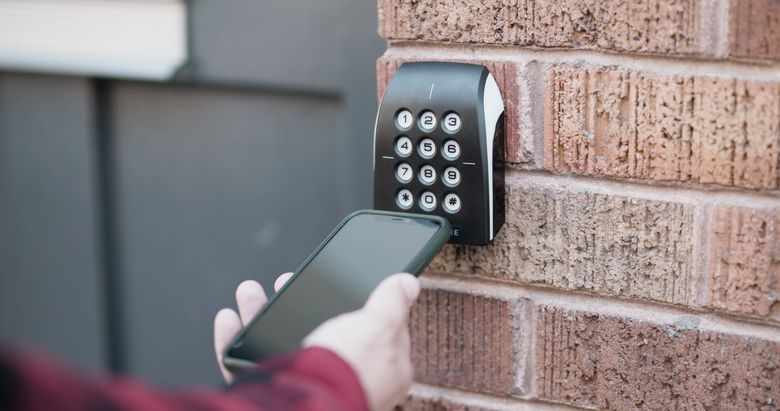
How New Technologies and Requirements for Higher Safety Give Advantage to Newer Solutions
As technology evolves and the need for enhanced security grows, newer access control solutions like mobile access offer several advantages over traditional systems like RFID access control systems.
The use of smartphones as credentials, combined with strong encryption and remote management capabilities, makes mobile access control systems more secure and convenient for both users and administrators.
Furthermore, the ability to customize access permissions and integrate digital ID systems allows for more precise control over who has access to specific areas within a facility. This not only enhances security, but also helps organizations comply with increasingly stringent safety and data protection regulations.
Benefits for Property Managers
- Admins can manage access to multiple workplaces or buildings directly from a mobile phone or desktop
- Easily invite new users via email and eliminate the need to exchange key cards in person
- Real-time activity feed allows admins to see who is accessing the building along with a timestamp
Benefits for Building Owners
- Avoid the cost of buying and installing two different systems for access control and intercom — Swiftlane offers an all-in-one access control solution
- Eliminate the ongoing cost of creating and managing new keys, fobs, and key cards
- Improves security and protects your investment with an encrypted and more secure access format
Benefits for Residents
- Mobile unlock provides a reliable, seamless experience every single time
- Encrypted signals ensure high security and data protection
- Remotely unlock the door from wherever you are
Future Proof Your Investment
Swiftlane’s cutting-edge technology and the system ensure that your money goes a long way and is protected from constant, expensive upgrade cycles.
- Install a modern SwiftReader for the price of a legacy RFID access system.
- Swiftlane software updates regularly and automatically, providing new features and capabilities at no cost.
- Invest in our system once and we guarantee security for a lifetime. Keycard systems are already outdated and have a high propensity for security breaches.
Navigating the Access Control Landscape: What Solutions Do Customers Prefer?
According to industry research, the preferences for access control solutions among customers are as follows:
- Mobile Access Control System: 40%
- RFID Card Access: 35%
- Biometric Access Control System: 15%
- Magnetic Stripe Card Access: 5%
- Other Solutions: 5%
These percentages indicate a growing preference for mobile access control solutions, as more organizations recognize the benefits of using smartphones and advanced communication technologies to enhance security and convenience.
Top Mobile Access Control Readers & Systems
Discover the best mobile access control readers and systems in the market! Compare top solutions, explore their features, and learn how to enhance your security infrastructure with the latest mobile access control technology. Stay ahead of the curve and secure your premises with unparalleled convenience and efficiency.
Read More about top mobile access control readers
Conclusion
In conclusion, RFID access control systems have been a popular choice for managing access to buildings and restricted areas, offering several advantages in terms of security, convenience, and versatility. However, as technology continues to advance, newer solutions like mobile access control are emerging as more secure and convenient alternatives.
The advantages of mobile access control systems, such as strong encryption, remote management capabilities, and customizable access permissions, make it an increasingly popular choice among organizations looking to enhance their security measures. As the demand for higher safety and compliance with data protection regulations grows, we can expect the adoption of mobile access control systems to continue to rise, eventually surpassing traditional RFID access control systems in popularity.
Start Improving Your Building Security
Contact a Swiftlane specialist and find the best access and intercom solution for your building.

